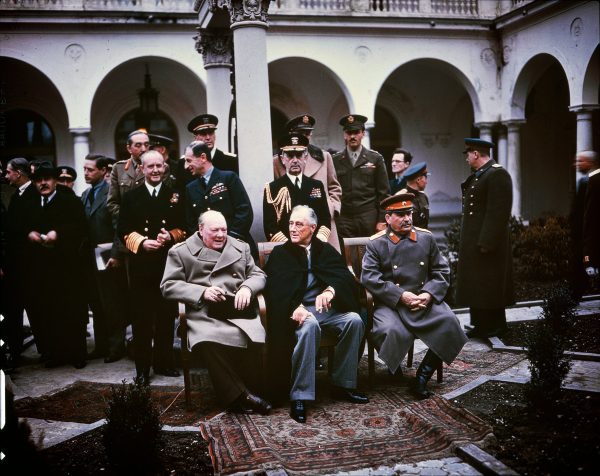Phish Didn’t Get Into the Rock & Roll Hall of Fame. WTF?

Driven by dubious metrics, fumbling with clearly baked-in blind spots and biases, in recurring corrective mode (see Sister Rosetta Tharpe) when it musters the will, the Rock and Roll Hall of Fame is always missing much of the real action in its attempts to canonize music that, if it sticks around long enough to be canonized, has often lost the fire if not the whole plot. Yet somehow we still care about the Hall’s verdicts, shaking our fists, occasionally pumping them. Hell, even Lou Reed — a man with as finely-calibrated a bullshit detector as any rock musician ever, inducted with the Velvet Underground and again (posthumously) for his solo work — even he cared. (Full disclosure: I’ve never been part of the nominating cabal, but I have been a voter for years, proud to have disgruntledly scrawled “New York Dolls” in red Sharpie as a graffiti write-in candidate on more than one ballot.) Despite a history of getting things wrong, and with due respect to the 2025 inductees, I was still flabbergasted that Phish — finally nominated this year — were snubbed, dissed, left at the alter. Unrivaled in the jam-band realm, godfathers to multiple generations of black-hole-spelunking rock noodlers, they’ve filled arenas, sheds, stadiums, motorway racetracks, decommissioned military bases, and Native American reservations. As New Yorker writer Amanda Petrusich pointed out this month in an admiring, super-sized profile of the band, Phish’s 1999 New Year’s Eve show at the Big Cypress Seminole Reservation, on the precipice of a supposed Y2K apocalypse, was attended by more people than any concert in the world that night. They smoked Metallica, Eminem and Jimmy Buffet — all three Rock Hall of Famers — who also hosted premature end-times parties that night. To judge by more criteria you’d think would signify to Rock Hall voters, the band has, depending on your math, roughly 16 studio albums (six gold, one platinum) and over 50 physical live albums, a largely meaningless number for a band that’s made every concert it’s played since 2002 available online. Many of the studio LPs are good, some (Lawn Boy, Billy Breathes, Joy, Round Room) could be called great. Trey Anastasio belongs on any list of the best rock guitarists (including Rolling Stone’s); drummer Jon Fishman keeps it tight and plays a mean vacuum cleaner; Mike Gordon and Page McConnell are master craftsmen, and crucially, the collective is more than the sum of their parts. After a drug-related hiatus worthy of a Behind The Music (another industry benchmark they somehow never clocked), Phish arguably came back better than ever — and are still at it, full-tilt and by all reports in full bloom, 40-some years after they began playing bars in Burlington, Vermont. I mean, seriously: last I checked, the Rock and Roll Hall of Fame Museum in Cleveland has Phish’s iconic hot-dog chariot — a stage prop as famous as the Rolling Stones’ inflatable mid-‘70s penis — hanging in their damn lobby. I thought dudes woulda been a shoe-in. “But the music,” you say. Oh, it’s not good enough? It doesn’t “rock” enough? Take a look at the full list of the Rock Hall’s inductees, measure Phish’s music against everything you see represented there, and get back to me. Honestly, such measurement is impossible — because Phish’s kaleidoscope oeuvre, much of it invented in real time on stages, never to be repeated the same way, can’t really be quantified, even if most of the concert recordings exist. To understand it, as the old saying goes, you really had to be there. Fun fact: that oeuvre, alongside all their original material, includes the band’s numerous, fairly letter-perfect re-creations of entire albums by other Rock Hall inductees over the years, many (but not all of them) part of an ongoing series of “musical costume sets” for their Halloween shows. They’ve done The Beatles’ White Album, Exile On Main Street, Quadrophenia, Ziggy Stardust, Dark Side of the Moon, Loaded. Talking Heads Remain In Light has been maybe my favorite so far. They also covered the classic live album Waiting For Columbus by Little Feat, another band shamefully never inducted into the Hall. Phish revere the traditions the Hall of Fame poobahs promote as much as they do, maybe more. Granted, Phish aren’t a singles band. They’ve never had a real hit, although “Free” — as perfect an evocation of being super-high at an arena rock show as any band has managed — hit #11 on the U.S. mainstream rock chart in 1996, among scattered lesser Phish chartings. And granted, the band is divisive, for reasons as much cultural as musical. You can’t pick your fans. Plenty of Phish-heads may be annoying, but so are plenty of Deadheads, metalheads, hip-hop heads, yacht-rock ironists, Springsteen fanatics. But hatas especially love to hate on Phish, so much so that it’s virtually part of their brand. Even the The New Yorker slipped a snarky subhead under the headline of that honorific Phish feature: “People who love Phish do so with a quasi-religious devotion. People who dislike Phish do so with an equal fervor.” Full disclosure number #2: I wouldn’t call myself a Phish fan, not really. At least not in the way I’d call myself a Deadhead. Certain Phish songs make me smile; certain Grateful Dead songs can make me weep. It’s partly a generational thing, but also an apples-and-oranges thing. For all the lazy — and a number of valid—comparisons between the bands, they do different things. The Dead zero in on eternal verities, cosmic consciousness, storytelling archetypes. Their jams are scuba-dives in warming oceans that wash you up on shore with a sense of wonder. As I see it, Phish dig the absurd, grok human folly, love to wow and wig-out their congregation. Their shows are amusement park rides, roller coaster carts chugging past funhouse mirrors and over tilting floors, dropping through trap doors, dumping you into the parking lot minus one earring and maybe your car keys. Consider that the Dead’s premiere jam journey is titled “Dark Star,” while Phish’s is called “Tweezer.” Yes, there’s overlap between these generalizations, and I’m sure even lay Phish fans could school me how I’ve got it wrong. I’ve only been to a handful of shows. The first was at the St. Paul Civic Center, 1995, and thanks to the band’s remarkable recordkeeping, I recall the hijinks: their what-just-happened? transformation into an adhoc bluegrass band during the first set, the sweet cover of Bowie’s “Life On Mars?,” a choogling “Chalk Dust Torture,” a woozy detour into Pink Floyd’s “Breathe” (the first-ever, I now know). It was fun. I’m not sure I stayed for the full second set. My reckoning came when I caught one of their signature Madison Square Garden New Year’s Eve shows — in 2002 > 2003, the first following a portentous 2-year hiatus, which had fans flying in from all over. As I wrote then with vestigial skepticism: “Yep, the drummer still wears a housedress. The band still pause mid-song for the occasional ‘silent jam.’ And the shows still draw more dreadlocked whiteys than Amsterdam during Cannabis Cup weekend.” But the music got its hooks into me that night. By the time the clock struck midnight and fake snow began falling on every part of the dark arena — like it was falling faintly through the universe, per James Joyce — and the band was spiraling through “Seven Below,” a Caribbean-tinged song-let that sounds like a mid-period Brian Eno sketch, I had the sensation you can get under a streetlight in a winter storm, when you seem to be rising up while the snowflakes stand still. I was probably very high. But it was objectively magical, a perfectly conceived and executed performance, totally delightful. The sort of thing the band has been doing consistently for decades: creating uniquely scripted parties packed with musical improvisation every night, compelling fans to travel hundreds of miles to attend dozens of shows, and spurring even folks with no natural grace to dance their asses off. This is what truly makes Phish great: not just songs or albums or concert recordings, but about memorable lived experiences. The shows. The community. Plenty of great artists cultivate this sort of culture; see Taylor Swift and Tyler the Creator. The Grateful Dead blueprinted it — and it’s worth noting that when the surviving members did their 50th anniversary “farewell” shows in in 2015, Trey Anastasio was the Jerry Garcia stand-in. I thought he acquitted himself beautifully, singing and playing the songs reverently but not slavishly, as much a fan of the band as anyone in the audience. As one pundit put it after the announcement of Phish’s Rock Hall nomination, the band itself IS a damn Rock Hall. And like countless other great un-inducted acts, they’ll continue building their own, every night they play, and fans will vote ‘em in again and again and again.



















